Weekly posts of space topics I find interesting and hope you will too! I'm a student who wants to improve my knowledge in this field :)
Don't wanna be here? Send us removal request.
Text
JUICE mission
Also known as:
JUpiter ICy moons Explorer

This highly anticipated ESA (European Space Agency) mission finally launched on April 14th after postponement and issues leaving the astrobiology community thrilled.
JUICE aims to fly on a 6 billion kilometre journey to Jupiter and carry out approximately 30 fly-bys of most of the Galilean moons - Europa, Callisto and Ganymede.
sources: https://astrobiology.nasa.gov/missions/juice/ 18/05/23
#astronomy#nasa#astrophotography#stars#photography#nebula#philosophy#space#astrophysics#constellations#JUICE
72 notes
·
View notes
Text
The Sombrero Galaxy
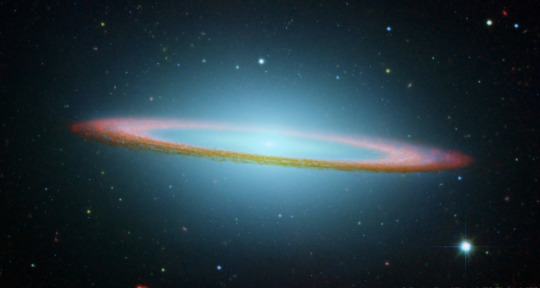
28 million light years away, the sombrero galaxy is within the nearby virgo cluster of galaxies. Here, we can see the image recently recorded by the orbiting Spitzer Space Telescope, superposed in false-colour on an existing image taken by NASA's Hubble Space Telescope in visible light.
before:

#astronomy#space#photography#stars#astrophotography#nebula#philosophy#astrophysics#nasa#constellations#james webb telescope#hubble space telescope#galaxies
131 notes
·
View notes
Text
Furthest star ever from earth spotted by James Webb Telescope

Earendel
Known as Earendel, this star was actually discovered by the Hubble Space Telescope. It has taken 12.9 billion years for Earendel's light to reach Earth which means it appears as it was close to the Big Bang! .
Gravitational lensing was used to discover Earendel and is used for many other deep space bodies. The gravity of a massive foreground object acts like a lens as it warps the fabric of space and time, bending and brightening light from a more distant body as that light passes by.
The JWST team employed this same strategy.
#astronomy#space#nasa#stars#astrophotography#photography#nebula#astrophysics#constellations#james webb telescope
483 notes
·
View notes
Text

Rho Ophiuchi ~ our nearest star forming cloud complex. Taken by James Webb on it's first birthday.
Stars within this cloud are similar in mass to the Sun or smaller. This bright red emission comes from jets of molecular Hydrogen gas flowing at fast velocities from an invisible protostar, VLA1623, a star so young that many Stone Age cave paintings pre-date it!
source: https://esawebb.org/images/weic2316a/
#space#nasa#stars#constellations#photography#astrophysics#astronomy#astrophotography#nebula#james webb telescope#nasa breaking news#NASA
397 notes
·
View notes
Text

The Andromeda Galaxy~taken from NASA Galaxy Evolution Explorer
This is our neighbouring galaxy. Scientists have observed blue shift which suggests it is accelerating towards us. But not to worry, no catastrophic collision will occur and not any time soon. The spaces between stars, planets etc is so large that actual collisions are very unlikely.
#astronomy#space#astrophysics#photography#astrophotography#stars#constellations#philosophy#nasa#nebula
1K notes
·
View notes
Text
The Earth Is Insignificant – and so are you

Shocking, I know. But normal people don’t often get to stop and think about how small we are in comparison to the whole universe. We are a mere needle in an astronomical hay stack that no one would ever stand a chance of picking out through the millions of other planets and stars out there. Yet, as far as we know, we are the only place that has sustained life.
So surely, you say, we must indeed be special if we are the only place that has ‘intelligent’ life?
And this is what people throughout history and civilisations had believed. That earth is the centre of everything. This geocentric view is the basis of religion – take genesis for example. The way it’s written can’t be interpreted that we are not in some way special and God is looking over us! Back in 1610, Galileo used his telescope to observe the first Galilean satellite (or moon) orbiting Jupiter. It shocked everyone he tried to tell as religion was so deeply rooted in that society. He was placed under house arrest as punishment for merely implying that the earth was not the centre of everything. The fact that a moon was orbiting another planet completely separate from us proved that the heliocentric model was correct – first postulated by Polish astronomer Copernicus.
Its this resistance to change and things that scare us which slows progress in the astrophysics field. It’s shocking how Galileo was treated for finding out something that would change astronomy forever.
So we now know that we are not the centre of everything, but where is all the other life then? This lack of observable life which should be present is called the Fermi Paradox and is an interesting concept which I will talk about in later posts.
I believe that there must be at least one other form of life out there just very far, far away from us and very primitive. The fact that we can’t see it doesn’t mean it isn’t there – we just need to looker closer.
Enter James Webb Telescope.
26 notes
·
View notes
Text

The Pelican Nebula ~
A nebula is a cloud of dust and gas that stars, planetary systems etc can be formed from. Here we can see light emitted from oxygen, hydrogen and sulphur producing this beautiful image.
taken by Abe Jones.
#astronomy#space#nasa#astrophysics#astrophotography#nebula#stars#photography#constellations#philosophy#physics
15 notes
·
View notes
Text
Euclid Space telescope

^^first test image from Euclid ^^
Launched on July 1st, Euclid is a joint ESA and NASA mission aimed to learn more about dark energy and dark matter. This elusive dark matter and energy makes up 95% of everything in the universe and the mission has scientists on the edge of their seats.
Euclid will map a third of our sky and look at distances between galaxies which can be an indication of dark energy. Whereas, dark matter can be detected by looking at how gravitational fields influence 'normal' matter such as stars, planets and galaxies.
#astrophysics#astronomy#space#nasa#astrophotography#nebula#euclid#maths#physics#cosmology#cosmos#science
145 notes
·
View notes
Text
Jupiter and Venus

Credit: Nasa.gov
this is so pretty
Don't you ever wonder at how small and vulnerable we are compared to the vast universe? Its crazy.
21 notes
·
View notes
Text
The best picture ever taken

Credit: Nasa, Voyager 1
Image description: Earth shown as a pale blue dot on the far middle right, seemingly unimportant and irrelevant to all things happening in the universe.
“Look again at that dot. That's here. That's home. That's us. On it everyone you love, everyone you know, everyone you ever heard of, every human being who ever was, lived out their lives… the Earth is a very small stage in a vast cosmic arena.
Think of the rivers of blood spilled by all those generals and emperors so that, in glory and triumph, they could become the momentary masters of a fraction of a dot…It has been said that astronomy is a humbling and character-building experience. There is perhaps no better demonstration of the folly of human conceits than this distant image of our tiny world… the pale blue dot”.
— Carl Sagan, Pale Blue Dot, 1994
Read the full extract here of the most philosophical and most important quote in all of human history:
34 notes
·
View notes
Text
Makemake - the dwarf planet within the Kuiper belt 🌌

Credit: Nasa
Pronounced MAH-kay MAH-kay, this dwarf planet is the second brightest within the Kuiper belt - an icy ‘donut’ shaped region full of rocks out beyond Neptune. It’s name comes from a Rapanui god of fertility - which is ironic as Makemake is so cold and barren that it’s unlikely life as we know it could exist!
It takes 305 earth years for it to make one revolution of the sun and its discovery led to scientists and researchers rethinking the classification of a planet.

In the first picture we see a bright light above Makemake. This is a moon nicknamed MK2 and was discovered in 2016 by the Hubble Space Telescope. 🔭 ⭐️
19 notes
·
View notes
Text
The Large Magellanic Cloud

The Large Magellanic Cloud (LMC) is nearly 200,000 light years from earth. The picture above shows how it consists of vast clouds of dust and gas most likely from old stars going supernova. It is a stellar nursery for stars, similar to a nebula.
Close to this is the Small Magellanic Cloud (SMC) and it is largely believed that their irregular shape is due to a collision that occurred between them thousands of years ago.
A prominent feature of the LMC is the Tarantula nebula (which the James Webb telescope recently took a high res photo of).

Sadly, those in the Northern Hemisphere never get the chance to see the LMC - it is only visible in the Southern Hemisphere!
6 notes
·
View notes
Text
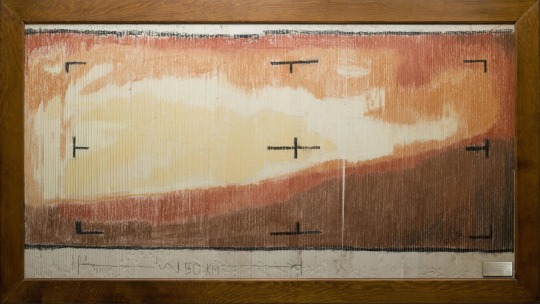
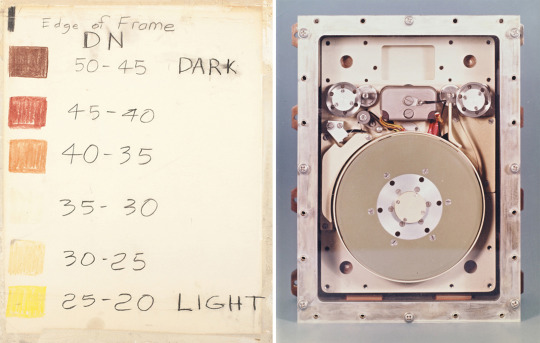
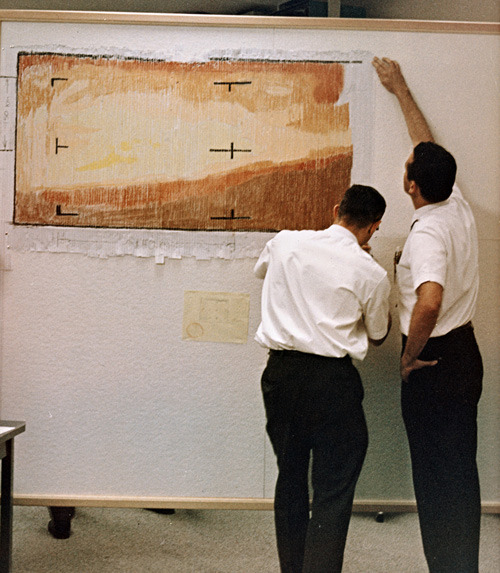
A Scientific Paint-By-Number Pastel Drawing Was Our First Closeup Image of Mars
1K notes
·
View notes
Text
This is so useful for me I love to stargaze! (:
a beginner's guide to stargazing in the northern hemisphere*
*note that the stars visible to people in the NH differ based on your latitude. Those nearer to the equator will see some different stars than someone near the north pole.
the big dipper
The big dipper is an ideal place to start with stargazing. Its ladle-like shape is widely recognized and is quite easy to spot, even in areas with greater light pollution. The big dipper is located towards the northern sky, and you can use it to locate two other well-known stars.
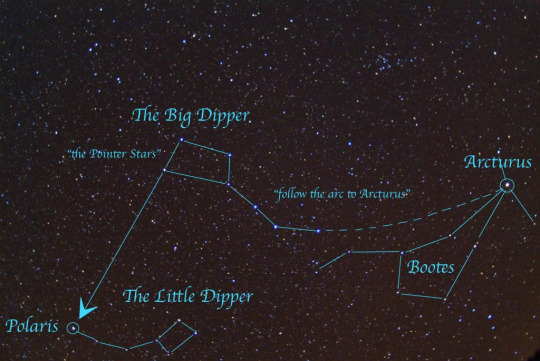
By following the bottom two stars in the "scoop" of the dipper, you can find polaris, also known as the north star. Polaris is always directly north, and its height in the sky is determined by your latitude. For example, someone at 20° N would see polaris located at 20° above the horizon. Polaris is located in the Ursa Minor constellation, also known as the little dipper.
By following the curve of the handle of the big dipper, you can locate the star Arcturus in the constellation Bootes. Arcturus is the brightest star in that constellation, and has a reddish tint to it, making it fairly easy to locate if you know where to look.
Looking on the other side of Polaris as the big dipper is on, there is a constellation known as Cassiopeia. Often known as the "crooked W," cassiopeia resembles, well, a crooked W. This is my personal favorite constellation :)
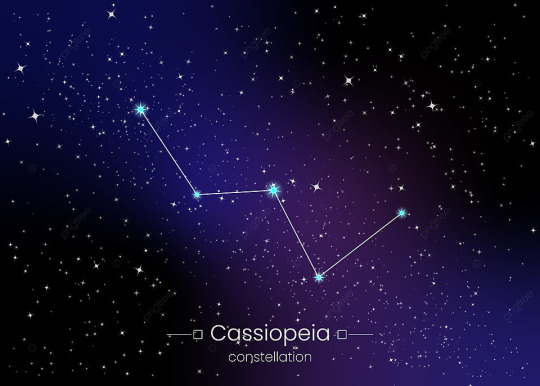
in the winter times in the northern hemisphere, occasionally the constellation orion is visible. this constellation is usually fairly low in the southern horizon, unless you live pretty close to the equator. Orion is usually best recognized by the three stars that form orion´s belt, and by following this belt you can find two more prominent stars.
If you follow orion´s belt downwards, you´ll find a very bright white star, named Sirius. This is one of the brightest stars in the night sky. Following Orion´s belt in the opposite direction, you´ll find the star aldebaran, another bright star which has an orangeish tint to it.
Above orion's belt is a well-known star named betelgeuse. Betelgeuse (pronounced beetle-juice) is best well known because it is a red supergiant star, which could go supernova anytime within the next few days to the next few thousand years. In our night sky, it appears fairly bright and quite orange.
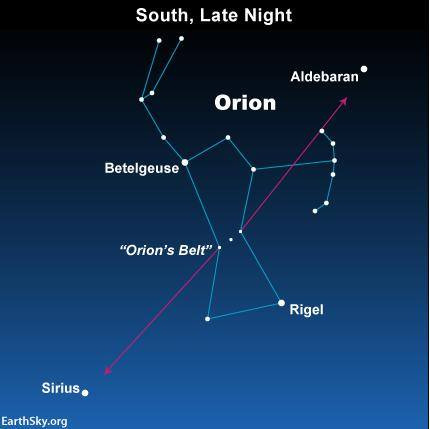
and finally, looking below orions belt, depending on the light pollution in your area, you may be able to see a cloudy looking object, almost appearing as "orion's knee" (that's at least what i call it, most people say it's his sword). This is the Orion Nebula - one of the only nebula visible to the naked eye.
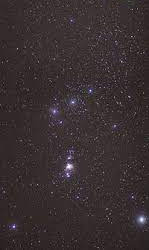
If anyone living in the southern hemisphere would like to add on tips for those living there, feel free! I'll reblog any other stargazing tips people leave :)
46 notes
·
View notes
Text
Neutron stars

The most densest thing in the universe. And the most interesting.
As the name suggests, they are made entirely of neutrons and nothing else. When a star approximately two and a half solar masses in size (two and a half times the mass of the sun) reaches the end of the main sequence stage, it swells up and then eventually collapses back down in on itself.
The immense pressure the molecules in the star experience causes the positively charged protons and negatively charged electrons to collapse in on each other, combing into uncharged neutrons.

Not much is known about neutron stars but we do know that are several types such as pulsars.These appear like flickering stars and were discovered by Jocelyn Bell - WHO WAS ROBBED OF A NOBEL PRIZE!!!
That controversy aside, pulsars radiate two steady, narrow beams of light in opposite directions. Although the light from the beam is steady, pulsars appear to flicker because they also spin. It's the same reason a lighthouse appears to blink when seen by a sailor on the ocean! As the pulsar rotates, the beam of light may sweep across the Earth, then swing out of view, then swing back around again. To an astronomer on the ground, the light goes in and out of view, giving the impression that the pulsar is blinking on and off.

Thanks for reading! (:
76 notes
·
View notes
Text
"If God did not exist, man would be obliged to invent him" - Voltaire
1 note
·
View note
Text
The Greek Mythology Behind Constellations 🌌
The Gemini Twins

Source: https://www.constellation-guide.com/constellation-list/gemini-constellation/
The constellation of Gemini is made up of two twins: Castor and Pollux. Castor was the mortal son of King Tyndarus, while Pollux was the immortal son of Zeus. Both Castor and Pollux, being identical twins, were inseparable. Castor was a great horseman and Pollux was a great fighter.
Together, they went with Jason on the Argo and saved the ship from a terrible storm. When Castor was killed in battle, Pollux pleaded with Zeus to bring him back from the dead and Zeus agreed to immortalise both Castor and Pollux, if they spend half of their time on the Earth and the other half amongst the stars in the heavens.
Since then, when sailors saw these two stars together, they knew their journey would be prosperous. However, seeing only one star foretold bad luck.

Description: star formation in the constellation Gemini Source: Nasa I find these myths so interesting. It’s amazing how creative the Greeks were with their story telling.
5 notes
·
View notes